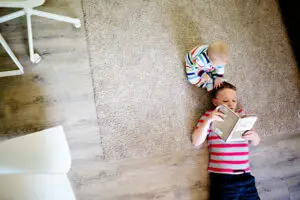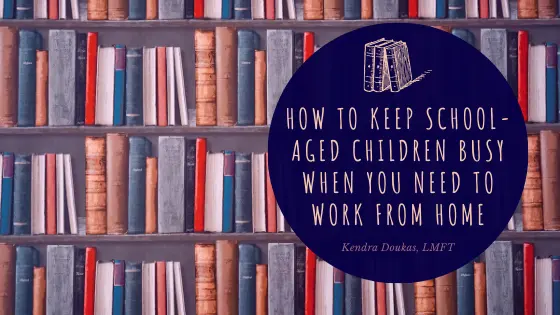For school-aged children, creating structure might be helpful. Try to mirror the structure of their typical school day. For example, you could have a schedule in 45-minute to one-hour increments. This is usually a good amount of time for school-aged children to be able to focus and for you to get a chunk of work done. Older children will be able to follow a posted schedule with some guidance while younger children or children who require more direction might need you to set an alarm for each time period to redirect them to the next activity. An example schedule might look like this:

9:45-10 Snack time (Prep the night before for ease in involvement.)
10-10:45 Music and movement time (Dance party! Playing instruments, dancing, putting on performances for one another, trying to play in a percussion circle together, etc.)
10:45-11:30 Writing time (Practice handwriting, give kids a creative story prompt to follow, practice cursive, have kids write notes to one another or send a penpal or family member a letter, etc.)
Lunch prep and lunch
1:00-1:45 Outside time (Remember that it is still okay to be outside! Avoid playgrounds and public areas. If you have a contained yard that is safe, this can be a great outlet for kids.)
1:45-3:15 Movie or screen time break
3:15-4 Drawing/crafts (Get out the art supplies and let your kids create, draw, color, paint if they can do this with little supervision, clay, etc. You could again give them a prompt or an idea or just let them go.)
4-4:15 Snack time
4:15-5 Educational app about science or math (There are many free ones out there! And many companies are offering free subscriptions during school closures. Most libraries are offering free tools for home education. Many museums and national parks are offering virtual tours. Audiobooks are available for free right now too. If you would rather they are not on an app or screen, you could encourage them to explore outdoors or make a nature observation, play a board game or do a puzzle.)





